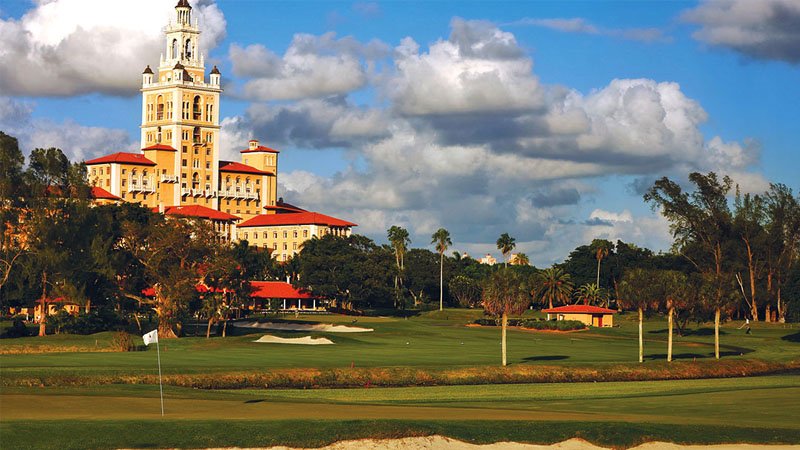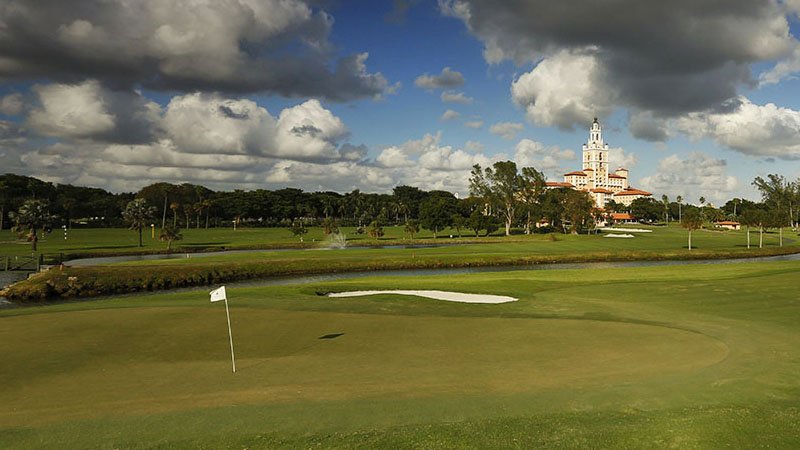
Nearly a century ago, The Biltmore opened its doors as a playground to Florida's well-heeled residents and only the most prosperous snowbirds.
When the 273-room hotel opened in 1926 in Miami's posh Coral Gables neighborhood, it boasted the tallest building in Florida and the world's largest swimming pool. It ushered in the jazz era and was a regular stomping ground for celebrities like Bobby Jones and Babe Ruth, the Duke and Duchess of York, Bing Crosby and Judy Garland, and even Al Capone, whose bodyguard was shot to death there in 1929. Nightclub entertainer Desi Arnaz got his start at the Biltmore and Hollywood Tarzan Johnny Weissmuller once was a swimming instructor there. While he was president, Franklin Delano Roosevelt maintained a working White House office at the hotel.
Built by real estate developer and Coral Gables city planner George Merrick, The Biltmore also was the site of a Donald Ross-designed golf course.
The Biltmore ushered in the jazz era and was a regular stomping ground for celebrities like Bobby Jones and Babe Ruth, the Duke and Duchess of York, Bing Crosby and Judy Garland, and even Al Capone, whose bodyguard was shot to death there in 1929.
Since those early days, the hotel and its golf course have had their ups and downs. The hotel also has been a hospital (twice) and medical school and the golf course, once the home of the prestigious Miami-Biltmore Open, wasn't always a showplace. Today, both are enjoying a renaissance that most recently includes a restoration of the Ross design that was among some of the last of the 44 he planted in Florida.
In a project that began this summer, architect Brian Silva, along with Duininck Golf, have focused on lengthening the course and making it relevant to today's equipment, while also recapturing Ross's original intentions. The project includes new Tif Eagle greens and 419 tees and fairways, adding and moving bunkers lost through the years and expanding practice areas.
Silva also had overseen a 2007 renovation that included new irrigation and drainage, rebuilding all greens and restoring Ross's original bunkers, including many that had become grassed over throughout the years.

During World War II, the hotel at The Biltmore served as a wartime hospital, then a Veteran's Administration hospital and later was the site of the University of Miami's medical school until 1968 when it was abandoned. The city of Coral Gables took over management of the historic, and empty, property in 1973 and a decade later sunk $55 million into a renovation that took four years to complete. It reopened as a hotel in 1987.
When the course reopens it will look more like it did when Ross built it in 1926 than at any time since.
According to The Biltmore, the work will include:
> No. 1, the bunker behind the green has been restored and a right greenside bunker removed to bring back the original Donald Ross design.
> No. 3, four Australian Pines and one large ficus tree were removed from the northeast side of the green, enabling visibility of the Biltmore tower from additional vantage points.
> Nos. 1 and 5, a corridor connecting the fairways was restored by removing trees and a bunker. The left-corner fairway bunker on No. 5 was also restored and the original fairway bunkers on the right corner of the dogleg were restored.
> The practice green was expanded from 5,000 square feet to 10,000 square feet, and the short game practice area was increased from one green and one bunker to three greens, two bunkers and a grass bunker.
> No. 12 was restored to the original 249-yard Par 3 design with no greenside bunkers.
> No. 14 green was restored to the original 1925 green design.
> No. 18 green was expanded from 5,000 square feet to 10,000 square feet; the expansion brings the steep fall-off on the left side of the green into play, and bunkering around the entire left side of the green was restored.
The golf course is scheduled to reopen in December.

